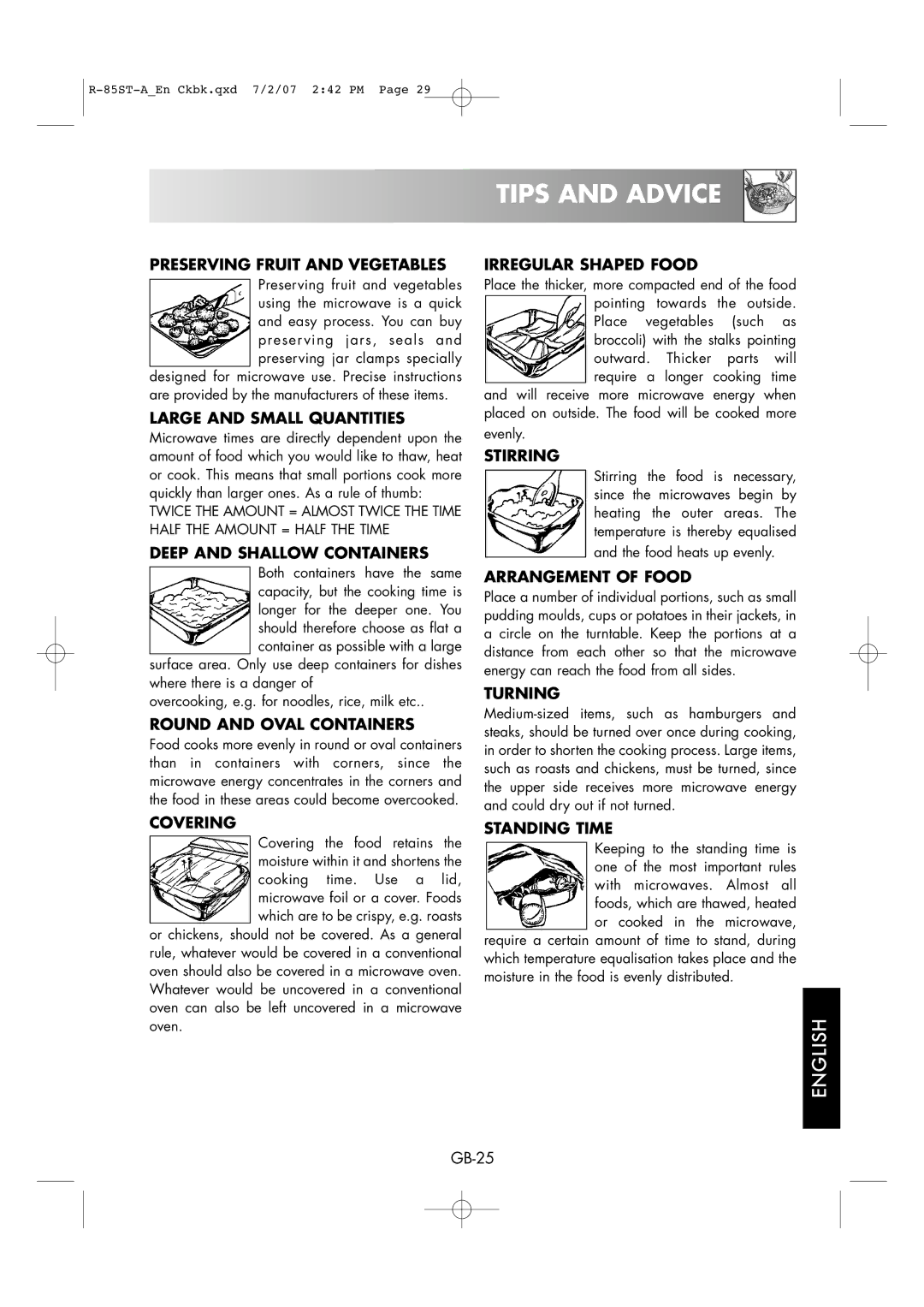
R-85ST-A_En Ckbk.qxd 7/2/07 2:42 PM Page 29



























 TIPS
TIPS AND
AND ADVICE
ADVICE



PRESERVING FRUIT AND VEGETABLES
Preserving fruit and vegetables using the microwave is a quick and easy process. You can buy preser ving jars, seals and preserving jar clamps specially
designed for microwave use. Precise instructions are provided by the manufacturers of these items.
LARGE AND SMALL QUANTITIES
Microwave times are directly dependent upon the amount of food which you would like to thaw, heat or cook. This means that small portions cook more quickly than larger ones. As a rule of thumb:
TWICE THE AMOUNT = ALMOST TWICE THE TIME HALF THE AMOUNT = HALF THE TIME
DEEP AND SHALLOW CONTAINERS
Both containers have the same capacity, but the cooking time is longer for the deeper one. You should therefore choose as flat a container as possible with a large
surface area. Only use deep containers for dishes where there is a danger of
overcooking, e.g. for noodles, rice, milk etc..
ROUND AND OVAL CONTAINERS
Food cooks more evenly in round or oval containers than in containers with corners, since the microwave energy concentrates in the corners and the food in these areas could become overcooked.
COVERING
Covering the food retains the moisture within it and shortens the cooking time. Use a lid, microwave foil or a cover. Foods which are to be crispy, e.g. roasts
or chickens, should not be covered. As a general rule, whatever would be covered in a conventional oven should also be covered in a microwave oven. Whatever would be uncovered in a conventional oven can also be left uncovered in a microwave oven.
IRREGULAR SHAPED FOOD
Place the thicker, more compacted end of the food pointing towards the outside. Place vegetables (such as broccoli) with the stalks pointing outward. Thicker parts will require a longer cooking time
and will receive more microwave energy when placed on outside. The food will be cooked more evenly.
STIRRING
Stirring the food is necessary, since the microwaves begin by heating the outer areas. The temperature is thereby equalised and the food heats up evenly.
ARRANGEMENT OF FOOD
Place a number of individual portions, such as small pudding moulds, cups or potatoes in their jackets, in a circle on the turntable. Keep the portions at a distance from each other so that the microwave energy can reach the food from all sides.
TURNING
STANDING TIME
Keeping to the standing time is one of the most important rules with microwaves. Almost all foods, which are thawed, heated or cooked in the microwave,
require a certain amount of time to stand, during which temperature equalisation takes place and the moisture in the food is evenly distributed.
